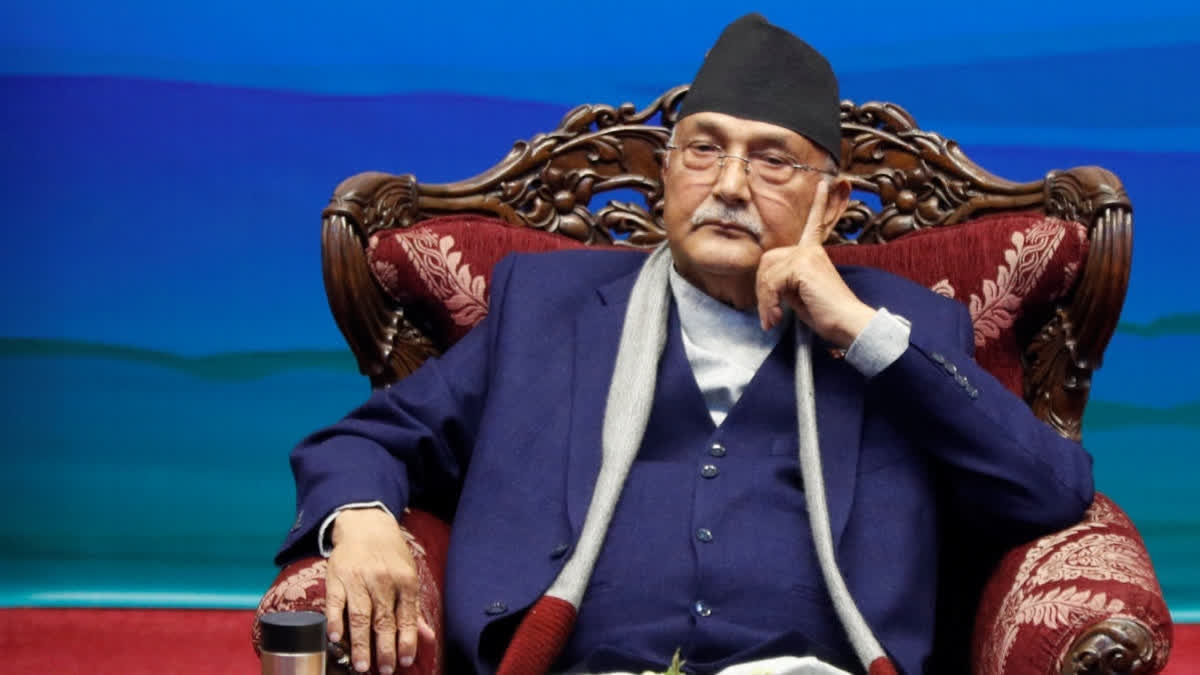New Delhi: Ahead of Nepal Prime Minister KP Sharma Oli’s visit to China next month, the Nepali Congress and the Communist Party of Nepal-United Marxist Leninist (CPN-UML), the two partners in the ruling coalition government in the Himalayan nation, are finally coming on the same page after weeks of negotiations about implementation of Beijing’s Belt and Road Initiative (BRI) projects.
Even as Foreign Minister Arzu Rana Deuba left for China on Thursday to lay the groundwork for Oli’s visit to China, the Nepali Congress and the CPN-UML have come to an understanding that specific BRI projects in Nepal should be implemented based only on grants.
According to a report in the Kathmandu Post, a four-member Task Force set up by the two parties--two from each side--met on Wednesday and drastically revised the BRI implementation plan proposed by China and trimmed it down to specific projects.
Though Nepal and China signed the BRI framework agreement on May 12, 2017, and China forwarded the text of an implementation plan in 2019, no further progress has been made mainly due to Kathmandu’s concerns over debt liabilities. Nepal has made it clear to China that it is not interested in taking commercial loans for implementing BRI projects.
The BRI is a global infrastructure development strategy adopted by the Chinese government in 2013 to invest in over 150 countries and international organisations. It is considered a centrepiece of Chinese President Xi Jinping’s foreign policy. It forms a central component of Xi’s “Major Country Diplomacy”, which calls for China to assume a greater leadership role in global affairs in accordance with its rising power and status.
Observers and sceptics, mainly from non-participant countries, including the US, interpret it as a plan for a Sino-centric international trade network. Critics also blame China for putting countries participating in the BRI under debt traps. In fact, last year, Italy became the first G7 country to pull out of the BRI. Sri Lanka, which participated in the BRI, eventually had to lease out the Hambantota port to China due to debt repayment issues.
India has opposed the BRI right from the beginning, mainly because its flagship project, the China-Pakistan Economic Corridor (CPEC), passes through Pakistan-occupied Kashmir.
Because of all these, Nepal is wary of getting trapped in unsustainable debt owed to China through BRI loans for expensive infrastructure projects. Nepal’s annual debt payments to China have already been rising rapidly over the last decade. Highly concessional terms offered by other lenders make taking on costlier Chinese commercial loans for BRI projects unappealing.
According to the Post report, the original text of the BRI implementation plan proposed by the Chinese side has been revised drastically and it will be handed over by Foreign Minister Rana to her Chinese counterpart Wang Yi for approval by Beijing. If approved, the new implementation agreement will be signed during Oli’s visit to China. “The new MoU (memorandum of understanding) on BRI implementation will focus on specific issues and projects required at present,” the report quoted a member of the Task Force as saying.
The question is: will China agree to Nepal’s terms and conditions which call for implementation of BRI projects through grants rather than loans?
BRI projects are primarily implemented through loans, joint ventures and equity investments. However, grants also play a role in certain scenarios, albeit to a lesser extent. Grants are provided for specific purposes, usually targeting smaller-scale projects or as a diplomatic gesture.
